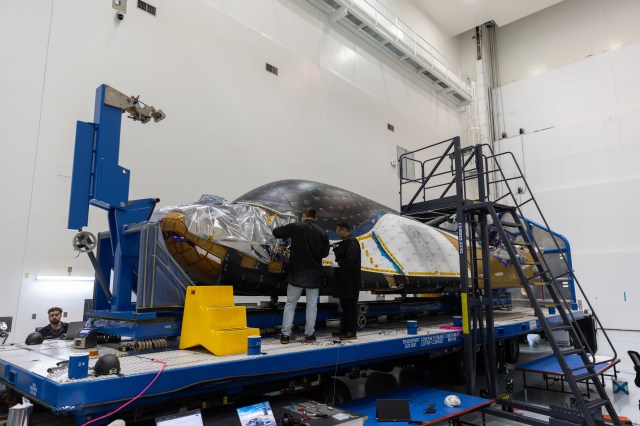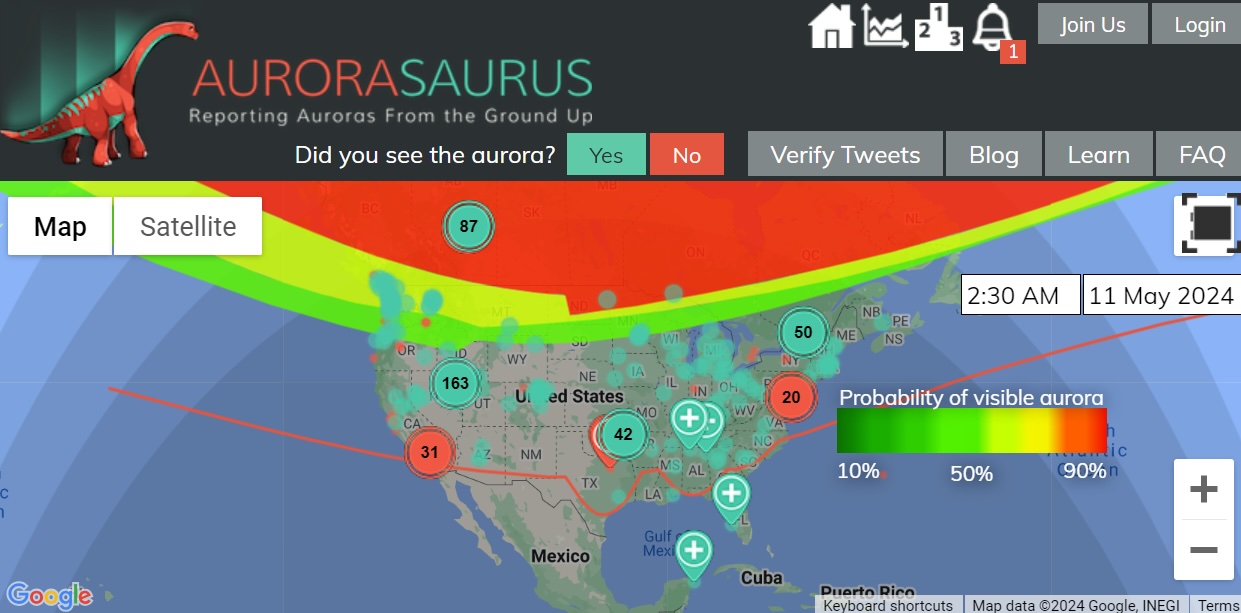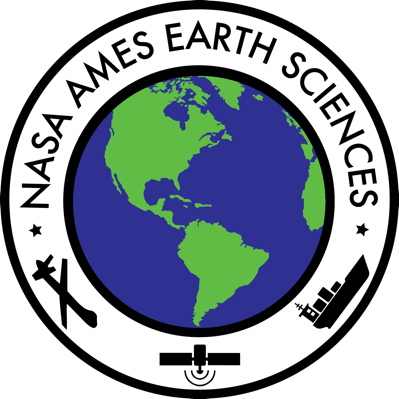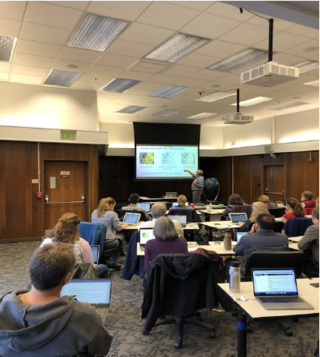Significant announcements:
20 November 2019.
- Earth Science Deputy Division Chief, Dr. Florian Schwandner, starts at Ames on 12 November 2019 – Dr. Schwandner, originally from Germany and Greece, comes to us from the Jet Propulsion Laboratory, where he worked since 2013 on a number of NASA and JAXA manned & unmanned airborne, and satellite missions and initiatives related to the carbon cycle, climate sciences, atmospheric sciences including air quality, plumes, and aerosols, and volcanology. He has initiated and led innovative and successful proposal teams, as well as international field teams before, during, and after volcanic crises in Southeast Asia, Europe, and the Americas. Prior to JPL he was a senior research fellow at the Earth Observatory of Singapore, research faculty at Colorado State University’s Atmospheric Science Department, and held postdoctoral appointments at Arizona State University and ETH Zurich, from where he also graduated with a Ph.D. in geochemistry in 2002. He has a long community service and public speaking record in science and the non-profit sector; most recently he became president-elect for Solid Earth Sciences at the Asia Oceania Geoscience Society (AOGS).
- International Group on Earth Observation (GEO) Ministerial Summit – Cindy Schmidt attended the summit in Canberra, Australia on 4-9 November 2019 as a member of the U.S. Delegation. Cindy, Nancy Searby (Program Manager, Applied Science Capacity Building, HQ) and colleagues from Conservation International organized a session “Earth Observations and the World’s Indigenous Peoples”, the first indigenous-focused session in the history of GEO. This session included indigenous panelists from Kenya, Ecuador, Australia, and the U.S. The goal of the session was to bring attention to the importance of indigenous peoples to participate in GEO as well as emphasize how Earth observations could benefit indigenous communities. In addition, Cindy invited James Rattling Leaf, a member of the Rosebud Sioux Tribe in South Dakota to attend the Summit. He became the first Native American to be a member of the U.S. Delegation focused on the importance of Earth observations for U.S. tribal nations.
- IMPACTS (Investigation of Microphysics and Precipitation for Atlantic Coast-Threatening Snowstorms) – Integration for the NASA P-3B research aircraft has begun. Vidal Salazar (PM) and Katie Stern (DPM) are traveling on 18 November 2019 to support the integration at Wallops Flight Facility. The deployment is scheduled for 15 January to 29 February 2020. The chief objective of this Earth Venture Suborbital (EVS-3) investigation managed by ESPO is to improve the predictive capability for East Coast snowstorms.
-
ATom (Atmospheric Tomography Mission) – Science Team Meeting will be held in Boulder, CO. 18 – 20 November 2019
ATom is a NASA Earth Venture – Suborbital mission that was designed to study the impact of human-produced air pollution on greenhouse gases and on chemically reactive gases in the atmosphere. Four deployments (Aug. 2016, Feb. 2017, Oct. 2017, May 2018), to cover seasonal variation, were conducted using the NASA DC-8 aircraft. The measurements spanned the Pacific and Atlantic Oceans from the Arctic to the Antarctic, sampling the troposphere from the boundary layer up to 12 km. Over 300 species were measured from more than 20 instruments aboard the DC-8
Link: http://igacproject.org/events/atmospheric-tomography-mission-atom-science-team-meeting
-
GEMS Science Team Meeting was held in Seoul, South Korea. 10th International Geostationary Environment Monitoring Satellite (GEMS) Workshop. 19 – 21 November 2019
GEMS – First-of-its-kind UV/Visible spectrometer for air quality trace gas measurements from geostationary orbit scheduled to launch on the Korean This is the last science team meeting before the scheduled launch. Attendees included Korean, Japanese, European, and U.S. space and environmental agency participants. Ryan Spackman presented GeoNEX—Making Earth Science Observations Accessible for Geostationary Satellites. Jack Kaye and Barry Lefer (both HQ) and Jim Crawford and Jay Al-Saadi (LaRC) also represented NASA.
-
C-HARRIER Team test Flight Series on 17 November 2019
On 12 November 2019, the C-HARRIER Project cleared both their US Navy NAVAIR and the NASA Airworthiness and Flight Safety Review Board (AFSRB)/Flight Readiness Review Board (FRRB) for the 3STAR instrument. Jim Eilers led the review of the new airborne 3STAR instrument integration on the Navy’s Twin Otter platform. The week of 17 November 2019, the C-HARRIER Team lead by Dr. Liane Guild, traveled to Monterey and began a test flight series with the 3STAR payload demonstrating 3STAR airworthiness on the Navy Twin Otter. Test flights will complete within the allocated test flight window that ends on 22 November 2019. The full payload includes the fairing installation of radiometers that have flown in past missions (2011 and 2013) supporting coastal water quality research. The addition of the 3STAR sun photometer enables measurements of aerosol optical thickness (AOT) that will be used to tune the atmospheric correction of the airborne radiometers important for deriving water-leaving radiance (water quality). 3STAR is part of an airborne instrument suite capability for coastal and inland waters calibration and validation.
13 November 2019.
- EXPORTS (Export Processes in the Ocean from RemoTe Sensing) – Science Team Meeting has successfully held 4-7 November at the University of Washington.
- IMPACTS (Investigation of Microphysics and Precipitation for Atlantic Coast-Threatening Snowstorms) – Vidal Salazar (PM) and Katie Stern (DPM) are traveling on 18 November 2019 to support NASA P-3B integration at Wallops Flight Facility. The deployment is scheduled for 15 January to 29 February 2020. The chief objective of this Earth Venture Suborbital (EVS-3) investigation managed by ESPO is to improve predictive capability for East Coast snowstorms.
-
Anh Nguyen participated in Jet Propulsion Laboratory (JPL) Team X meeting in support of the SBG study. 29 – 30 October 2019.
An important finding in this meeting was the competitiveness of proposed small-satellite architectures. This opens the possibility that ARC will be asked to lead more detailed studies of small satellite architectures for this 2017 Decadal Survey mission.
The Surface Biology and Geology Study is one of four pre-Phase A studies for the observing system missions identified in the 2017 Earth Science Decadal Survey to which Ames Research Center is contributing science, technology, and engineering expertise.
Link: https://sbg.jpl.nasa.gov/news-events/2019-surface-biology-and-geology-sbg-community-workshop
6 November 2019.
- The King of Bhutan and his delegation visited Ames on 1 November 2019 – Jennifer Dungan presented an overview of Ames’ Earth Science division and the NASA Earth Exchange (NEX), followed by presentations by Ashutosh Limaye and Tony Kim (NASA Marshall) on SERVIR (an acronym standing for the Spanish words meaning Mesoamerican Regional Visualization and Monitoring System) and GLOBE (Global Learning and Observations to Benefit the Environment Program), and Zach Bengtsson (Ames DEVELOP). This visit follows the development of a U.S.-Bhutan Science, Technology, Engineering, and Math program recently funded by the Department of State in cooperation with NASA and USAID. Future plans under this program include collaborative research, science entrepreneurship and startup training, and supporting STEM education in primary and secondary schools.
-
IMPACTS (Investigation of Microphysics and Precipitation for Atlantic Coast-Threatening Snowstorms) – Aircraft integration will begin on 12 November 2019 (P-3) and on 1 December 2019 (ER-2). The first field campaign is scheduled from 15 January to 29 February 2020. The chief objective of this Earth Venture Suborbital-3 (EVS-3) investigation managed by ESPO is to improve predictive capability for East Coast snowstorms.
-
S-MODE (Sub-Mesoscale Ocean Dynamics Experiment) – The Confirmation Assessment Meeting was successfully completed on 1 November 2019. S-MODE is an EVS-3 investigation managed by ESPO to examine the sub-mesoscale variability in ocean-atmosphere exchange over the Pacific Ocean off the coast of Northern California.
-
NASA Solid-Earth Team Meeting, La Jolla, California. 4 – 6 November 2019. SMD ESD Earth Surface and Interior Science Team Meeting
The NASA Solid-Earth Team included investigators funded by Earth Surface and Interior (ESI) and related NASA research programs, associated postdocs, graduate students and their advisors, and members of mission science teams working on topics relevant to ESI. The inaugural annual meeting offered opportunities for face-to-face interactions among the broader ESI (https://science.nasa.gov/earth-science/focus-areas/surface-and-interior) community, sharing of ESI research highlights, information about upcoming missions, solicitations, and research opportunities, as well as training sessions and tutorials on key capabilities for the ESI community. The program included discussions to collect community input that could help inform future projects, campaigns, or funding opportunities.
Matthew Fladeland gave an invited keynote regarding Technology Disruptions in Earth Science, focusing on Unmanned Aircraft Systems. Ian Brosnan and Ryan Spackman also attended on behalf of the Ames Earth Science Division. Susan McFadden and Alex Stanfill from ESPO coordinated and supported the logistics for this meeting. The meeting was held at the Scripps Institution of Oceanography.
-
EXPORTS (EXport Processes in the Ocean from RemoTe Sensing) will be holding Science Team Meeting at the University of Washington, Seattle, WA. 4 – 7 November 2019
The goal of the EXport Processes in the Ocean from Remote Sensing (EXPORTS) Science Plan is to develop a predictive understanding of the export and fate of global ocean net primary production (NPP) and its implications for present and future climates.
-
This year’s event is sponsored by Ames Center Chief Technologist. It will be held at Ames Research Center, Moffett Field, in the Conference Center (Bldg 3) between 2 and 5 PM. 7 November 2019
The showcase highlights the recipients of FY19 Center Innovation Fund (CIF), Internal Research and Development (IRAD), Ames Research Innovation Award (ARIA) and the Innovation Fair awards. The researchers and technologists present posters to Ames colleagues while enjoying Space Bar happy hour, munchies and networking. This event is open to the Center.
– Laura Iraci will present both a poster and a 10-min talk describing the Trace Gas GRoup’s progress on Advancing two Flight Instruments to Mission Readiness and Proposal Success. Both instruments are targeted to participate in field campaigns in summer 2020, and IRAD funding has been used to identify mission critical improvements in thermal management and spectral fitting which must be addressed to ensure the measurements of carbonyl sulfide and carbon monoxide meet the science requirements.
– Stephen Dunagan will be presenting the muSSTAR project. The miniature unmanned airborne Sunphotometer for Sun-Tracking Atmospheric Research (muSSTAR) project combines Ames expertise in aerosol instrumentation, unmanned airborne systems, and autonomy to develop new experimental capabilities to study aerosol effects on Earth’s radiation budget in the critical but previously inaccessible regions of the deep boundary layer.
– Meytar Sorek-Hamer will be presenting her work, “Virtual Sensors for Air Quality Measurements in Urban Environments” (PI – Nikunj Oza, code TI).
-
ATom (Atmospheric Tomography Mission) – Science Team Meeting will be held in Boulder, CO. 18 – 20 November 2019
ATom is a NASA Earth Venture – Suborbital mission that was designed to study the impact of human-produced air pollution on greenhouse gases and on chemically reactive gases in the atmosphere. Four deployments (Aug. 2016, Feb. 2017, Oct. 2017, May 2018), to cover seasonal variation, were conducted using the NASA DC-8 aircraft. The measurements spanned the Pacific and Atlantic Oceans from the Arctic to the Antarctic, sampling the troposphere from the boundary layer up to 12 km. Over 300 species were measured from more than 20 instruments aboard the DC-8
Link: http://igacproject.org/events/atmospheric-tomography-mission-atom-science-team-meeting
-
Ames Honor Award Recipients 2019 (Group Team) – ARC Scientific and Technical Information (STI) Office
The STI Team will receive a 2019 Ames Honor Award on Thursday, November 07, 2019, N-201 (Main Auditorium) at 11:00 AM, for commendable execution of the Scientific and Technical Information Program, supporting advancement of aerospace knowledge and contributing to US competitiveness in aerospace research and development.
– Jennifer Kenworthy (Code SGE)
– James Podolske (Code SGG)
– Chris Scofield (Code SG)
– Joseph Skiles (Code SGE)

































